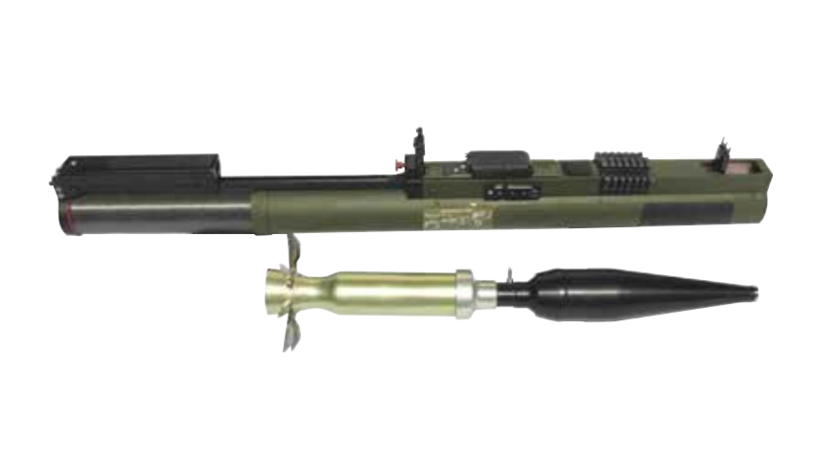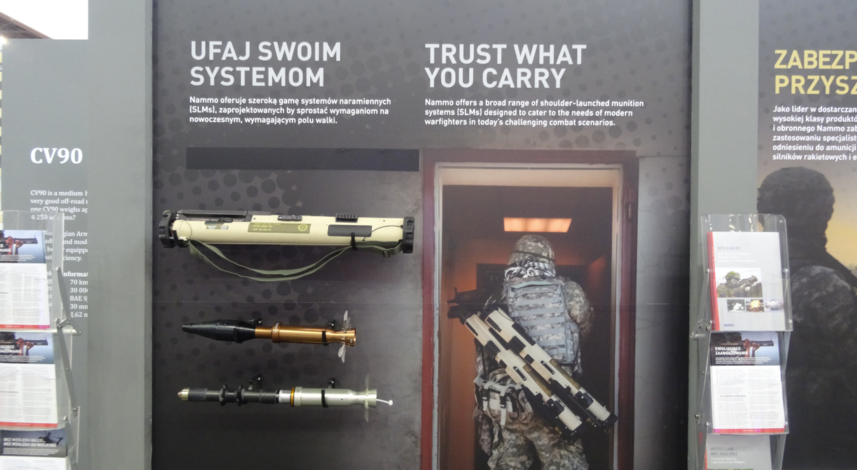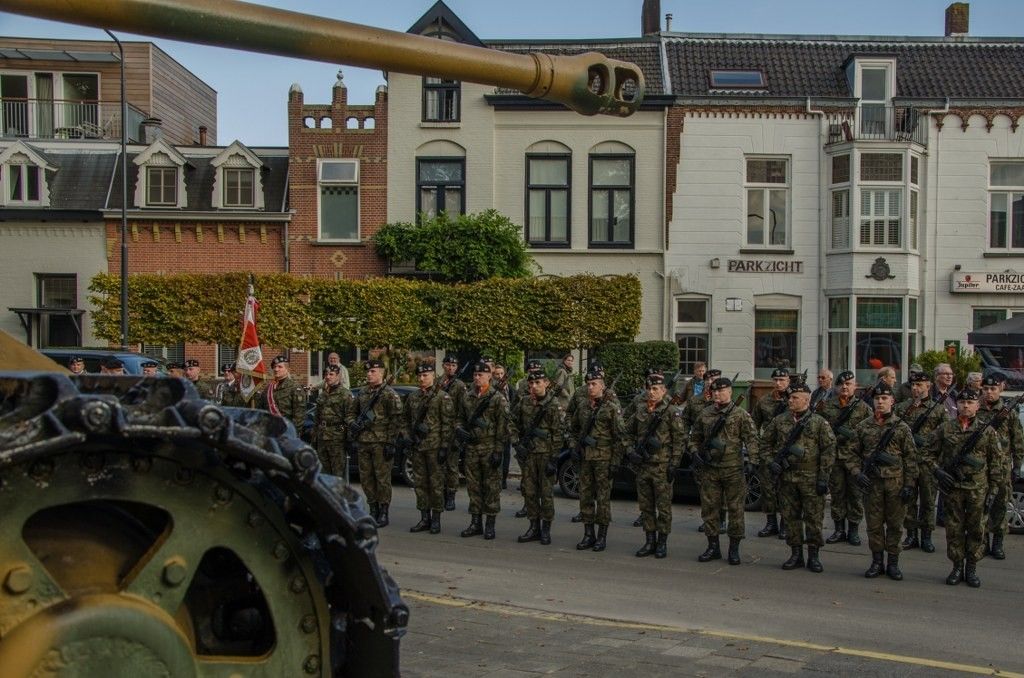Armed Forces
Light Anti Tank Weapons to be Manufactured in Poland? New Generation of the LAW System
Several weapons have been developed, throughout the long period of existence of various military systems, which, as a result of subsequently implemented upgrades and customization, following the evolution of the battlefield environment and needs, have been continuously used over a long period of time. One of the proposals, within the scope of single-use anti tank weapons, the existence of which conforms with the above principle is the design offered together by the ZM Dezamet and Nammo AS – the M72 anti-tank rocket launcher.
The system is using two types of warheads, with a range of up to 350 meters – M72 EC LAW uses the HEAT warhead, capable of penetrating up to 450 mm RHA, and M72 ASM RC, using a HE warhead. Alongside the combat weapons, additional virtual training simulator and a training variant are also being offered.
This weapons system, initially utilized as a single-use anti tank weapon, has been introduced into use back in the 1960s, in order to replace the M20 launccher. Now, a number of variants of these launchers manufactured by the Norwegian Nammo company is being continuously upgraded and tailored to the requirements of the contemporary battlefield. LAW is also being offered to Poland, within the framework of cooperation with the PGZ’s Dezamet facility which has announced its readiness to manufacture this type of weaponry.
Nammo company is a major player, offering a wide array of specialized equipment or comprehensive weapons systems. At the moment, Nammo employs almost 2200 ammunition experts and specialists, working on, besides the ammunition of a variety of calibres, grenades, rocket propulsion systems or grenade launchers. The philosophy adopted by the company is based on dynamic profile of the undertaken actions, with continuous perfecting of the offered products and adopting the product line before the market needs change.
22 plants of the Nammo company are located across 11 countries, and these facilities have been tasked with delivering products or manufacturing components for the global defence industry players, cooperating with the Norwegian entity.
At the moment, 37% of the manufactured products is being sold on the US market, 33% in Europe, while 8% is the quantity sold globally. 22% is being delivered to Scandinavia: Finland, Sweden and Norway. Sales, throughout the year 2015, reached a value of NOK 3.8 billion (20% of all of the manufactured products were sold within the civil market).
Nammo is associated primarily with the ammunition. In this domain, the offer includes a myriad of calibres (including the 30×173 mm rounds, license manufactured in Poland by the MESKO facility, for the Rosomak APC) but the Norwegians also manufacture the M72 LAW anti tank weapon. Around 1 million examples of this system have already been manufactured. And despite the fact that the weapon has seen its combat debut during the Vietnam war, throughout the following years it has been constantly upgraded and modernized, so that it would conform with the new requirements of the current and prospective user.
Renaissance in using this type of armament could have been seen after the Iraqi and Afghan operations, during which it turned out that weight, dimensions and price play a major role in asymmetrical scenarios.
The peculiar features of the LAW family weapons include limited weight and dimensions, universal character and simplicity of use. A specialized training system, offered along with the launcher, is also quite important. Nammo offers a training simulator, replicating the LAW72 shooting conditions. The company also created a 21 mm training launcher.

The design of the launcher is based on a system of two tubes forming the “barrel”, within which a stabilized rocket is placed, with a solid propellant, initially using a HEAT warhead, now available with other types of payload. When in transport setting, the launcher also serves as a single use packaging for the round, while its ends are covered. The launcher does not feature any grips, only a trigger unit and a simple iron sight or a mount for some other type of a targeting device.
User of this type of launcher does not need to use any face protection, as the propellant is burnt completely before the projectile leaves the tube. The projectile itself has been fitted with a piezoelectric fuse. The muzzle velocity of the round is 145 meters per second, and originally it was capable of penetrating 305 mm of RHA and 600 mm of reinforced concrete.
Extending the tubes arms the trigger and deploys the sight. The original LAW launcher was 655 mm long, and the length went up to 893 mm in combat setting. The internal tube of the launcher is made out of an aluminium alloy, while the external one is made out of plastic. The launcher’s calibre is 66 mm. Effective range for the older variants is 300 meters against stationary, and 180 meters when used against moving targets.

Numerous variants of this weapon have been operated, during its long lifetime:
-
M72A1 – fitted with a rocket with a modified propulsion system;
-
M72A2 – fitted with a rocket with a modified propulsion system;
-
M72A3 – with a modified safety switch;
-
HAR66 – Turkish derivative, fusing the features of M72A2 LAW and M72A3 LAW;
-
M72A4 – using a projectile of higher penetration of up to 350 mm;
-
M72A5 – with a modified launcher, weight of 3.6 kg, different lengths 780/989 mm (folded/extended), minimum range of 15 meters and effective range of 350 meters, and penetration ability: up to 300 mm RHA.
-
M72A6 – fitted with a projectile the HE effectiveness of which has been upgraded. US Army utilizes the M72A6 launcher, marked as M72A7. A single M72A7 system may destroy a non-armoured vehicle or a machine gun station, while its cost is limited down to USD 2500, which is significantly lower in comparison with more sophisticated weapons, not to mention the Javelin or Spike ATGMs. The launcher’s weight is 3.5 kilograms, it utilizes the PBXN-9 projectile.
-
In case of the M72A8 and A10 variants of the weapon, a new projectile propulsion solution has been applied. A small explosive charge compresses a special liquid which propels the projectile. The propelling material is then ejected in an opposite direction. Such solution, even though it is more expensive than the standard one, is beneficial, since the shot sound intensity is reduced by more than 30%, recoil is also significantly diminished. Flash, following the shot, has been almost completely eliminated.
-
L72A9 Light Anti Structures Missile is a British derivative, using a projectile with a 1 kg HE warhead;
-
Newly developed M72A9 variant, designed to act against fortified positions, features an aluminium anti-structure warhead with muzzle velocity of 130 meters per second and weight of 0.63 kg, with reduced flash. The system itself is lightweight – its weight is 4.3 kilograms. It may be applied at a minimum range of 15 meters (maximum range is defined as 600 meters) and within the temperature range from -450 to +700 C.
-
M70E11 Mk 1 PD variant has a large effective radius for the ABM type warhead, and its maximum range is 800 meters. M72E12 version of the weapon features a new piezoelectric fuse, with a double safety system.
-
M72 ASM RC calibre is 42 mm, the system utilizes a special projectile with 415 gram DPX-6 warhead, the purpose of which is to destroy fortified positions. Muzzle velocity of that projectile is 170 meters per second.
-
M72 EC LAW has its penetration capability higher, as it is capable of acting against up to 450 mm RHA (LAW Mk1) and 300 RHA (LAW Mk2);
-
M190 is a multiple use training variant. It uses stabilized M73 solid propellant rocket projectiles. M73 rocket, once it hits the target, creates flash, bang and a cloud of white smoke.
-
M72 Training System uses a 21 mm projectile, with weight, mass and ballistic identical to the combat variants.
The latest M72 FFE A8 anti-tank and A9 anti-structure launchers may also be used in enclosed rooms. Up to five shots may be taken from such location.
All types that are currently offered produce less noise than their predecessors, with limited flash and smoke effects, whereas the muzzle velocity of the projectile has not been diminished.
The launchers that are manufactured and delivered undergo a variety of test procedures confirming the reliability and safety of use. For example, the system is being tested across a temperature range between -510 C and ca. + 720C, or drop-tested, at heights of 2100 mm.
At the moment, in many armies all around the world, M72 LAW complements more modern, heavier anti tank weapons, ATGMs, or other specialized weaponry, when a need arises for usage in specific conditions, against specific targets.
M72 LAW Anti Tank Weapon and the Polish Industry
ZM Dezamet S.A. company, which is a part of the PGZ group, on the basis of the existing requirements of the Polish Army related to the need to introduce a new single-use anti-tank weapon into the inventory, has opened a cooperation programme with the Nammo company, to offer the LAW 72 launcher (and its specialized variants), along with the related complex training system. Such grenade, besides the operational units, could also be used by the elements and branches of the Territorial Defence component.
The Polish industry declares that should this very solution be selected by the Ordering Party, the firs deliveries would take place in months. The “polonization” process itself would take several years, and it will be dependent on the requirements set, and on the needs of the Polish Army. Manufacturing of the individual elements of the launcher, as a part of the whole implementation process, would be concentrated in the domestic facilities.
Nammo company also declares its will to tighten the collaboration with the Polish entities, within the process of further development, modernization and upgrading of the said system, and it looks forward to feedback and remarks of the new users, arising on the grounds of ongoing use and evolution of the contemporary battlefield.
It shall be admitted that even in spite of the unsatisfactory parameters related to penetration of the armour of the contemporary armoured vehicles, mainly when it comes to IFVs and main battle tanks, the abilities offered by M72 LAW launchers are quite wide, and make it possible to use this effective weapon for specific purposes, with properly adopted tactics.
The proposed training system provides good conditions for simulated shooting, thanks to which it is possible, with limited costs, to significantly raise the level of training for the personnel using these, and other, much more complex, weapons. This specific type of a grenade launcher, thanks to its usability, becomes an element of the joint weapons systems which make it possible to complete a variety of missions on the battlefield. Decision to be taken by the Polish Ministry of Defence, regarding the acquisition of a new launcher, selection of a new launcher, and introduction of that launcher into the inventory still remains unknown.
Marek Dąbrowski



